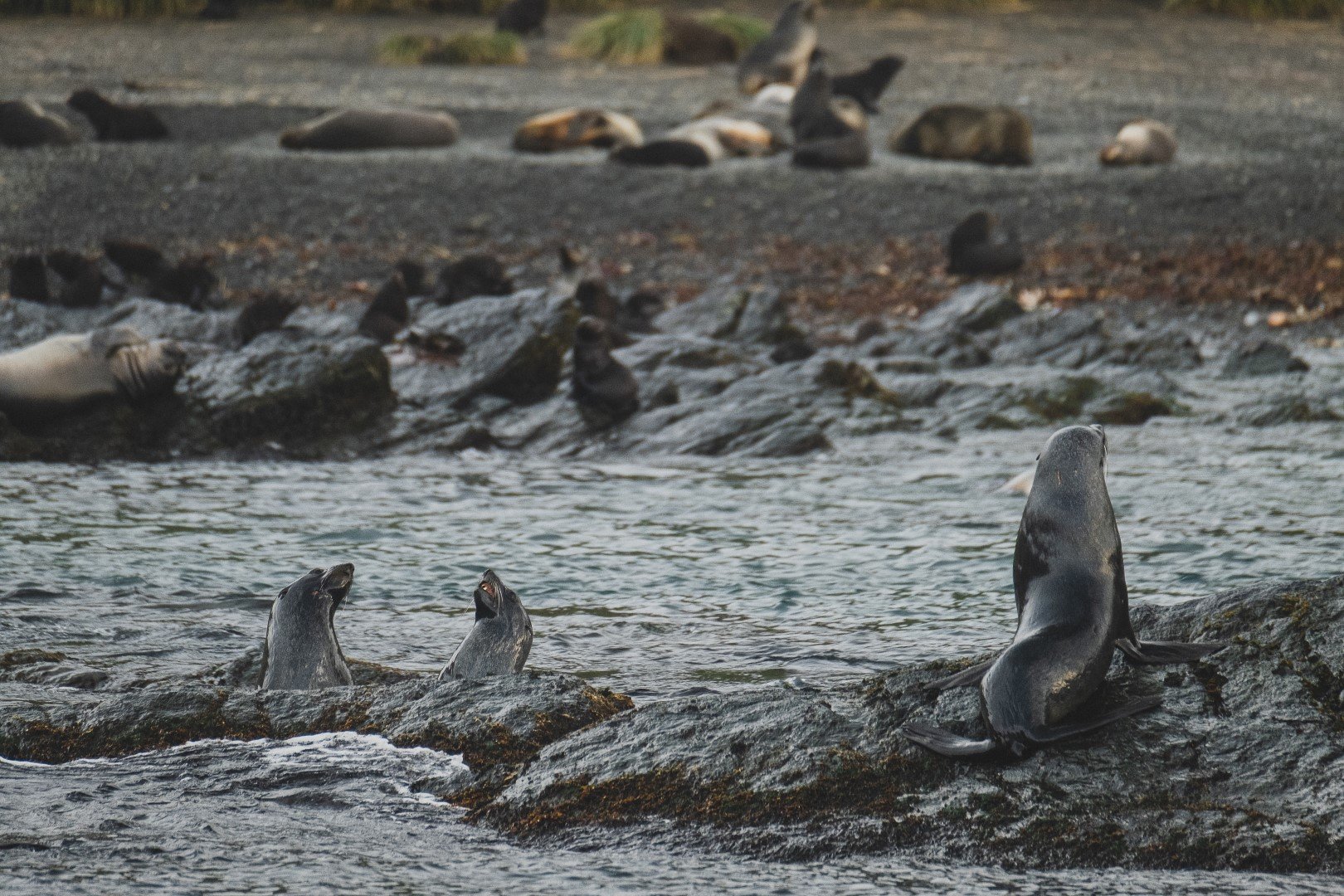Penguins Expedition (II): Fur seals gauntlet
We are a team of penguin researchers, but here in South Georgia each morning starts with a different type of wildlife encounter… every day on our way to visit the penguin colonies we must pass through the fur seal gauntlet.
If you’ve never been to South Georgia this may sound like a joke. Fur seals are adorable! Long whiskers, big eyes, the ability to balance a ball on their nose in exchange for fish. But on South Georgia we are in their territory.
The crew of the Vinson gives us each a stick or an oar to carry. Our instructions are not to actually hit the seals, but when they charge we should wave our sticks, and for the particularly tenacious ones a little touch with an oar on the flipper should send them on their way.
These instructions are hard to remember the first few times we’re surrounded by snarling fur seals. Some of our landing sites have a couple of hundred seals to walk past, with every clump of tussac grass a potential fur seal hangout.
The 200kg males are intimidating in their size, but it’s the mama seals that feel like a real threat… walk between a mama seal and her pup and you will regret it.
While the fur seal gauntlet adds a little spice to our penguin visits, it’s wonderful to see how these animals are flourishing in South Georgia after being hunted to near extinction for their pelts in the 19th century.
It’s not known exactly how many Antarctic fur seals are now living in South Georgia, but from a few isolated groups at the end of the 1800s, there are now millions of seals across the island with numbers continuing to grow. Every beach is covered in lounging seals, at every anchorage we can look over the side of the Vinson and see them swimming by.
Jane Younger
Jane is a Lecturer at the University of Bath. Jane’s research is on population genomics. She is interested in understanding how penguin populations have changed over time and are responding to climate change. Using DNA, she will examine how penguins at different locations have evolved and adapted to their environments, including what diseases they might be carrying. Her work has shown that Gentoo penguins are five distinct species. Jane has spent many years researching penguins but this is her first trip to the West Antarctic. Jane will soon return back to her homeland of Australia to continue her work on Antarctic marine systems.







